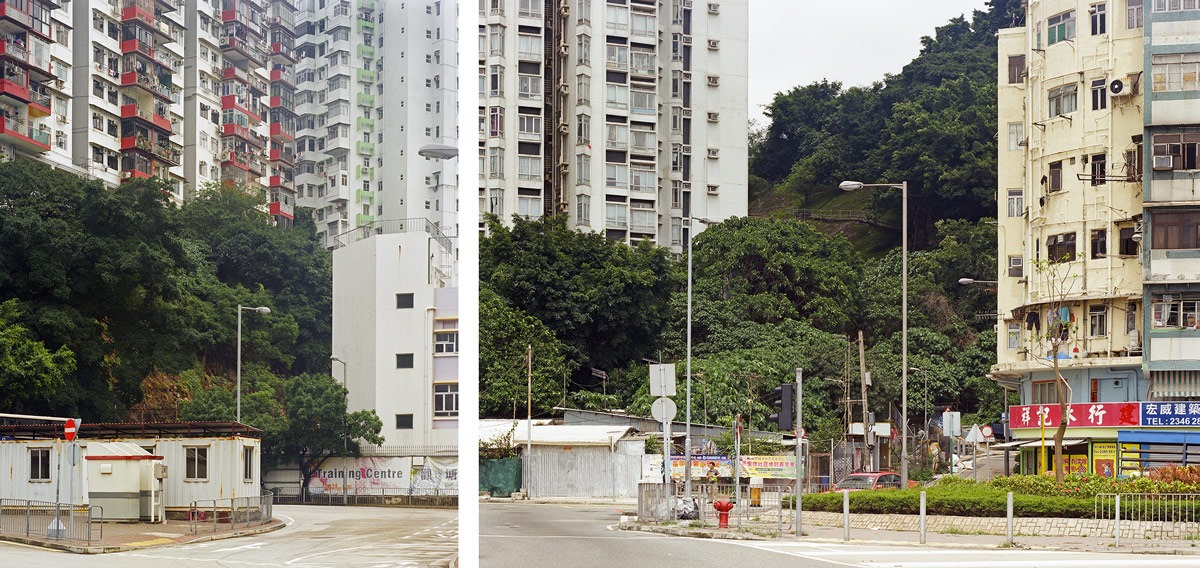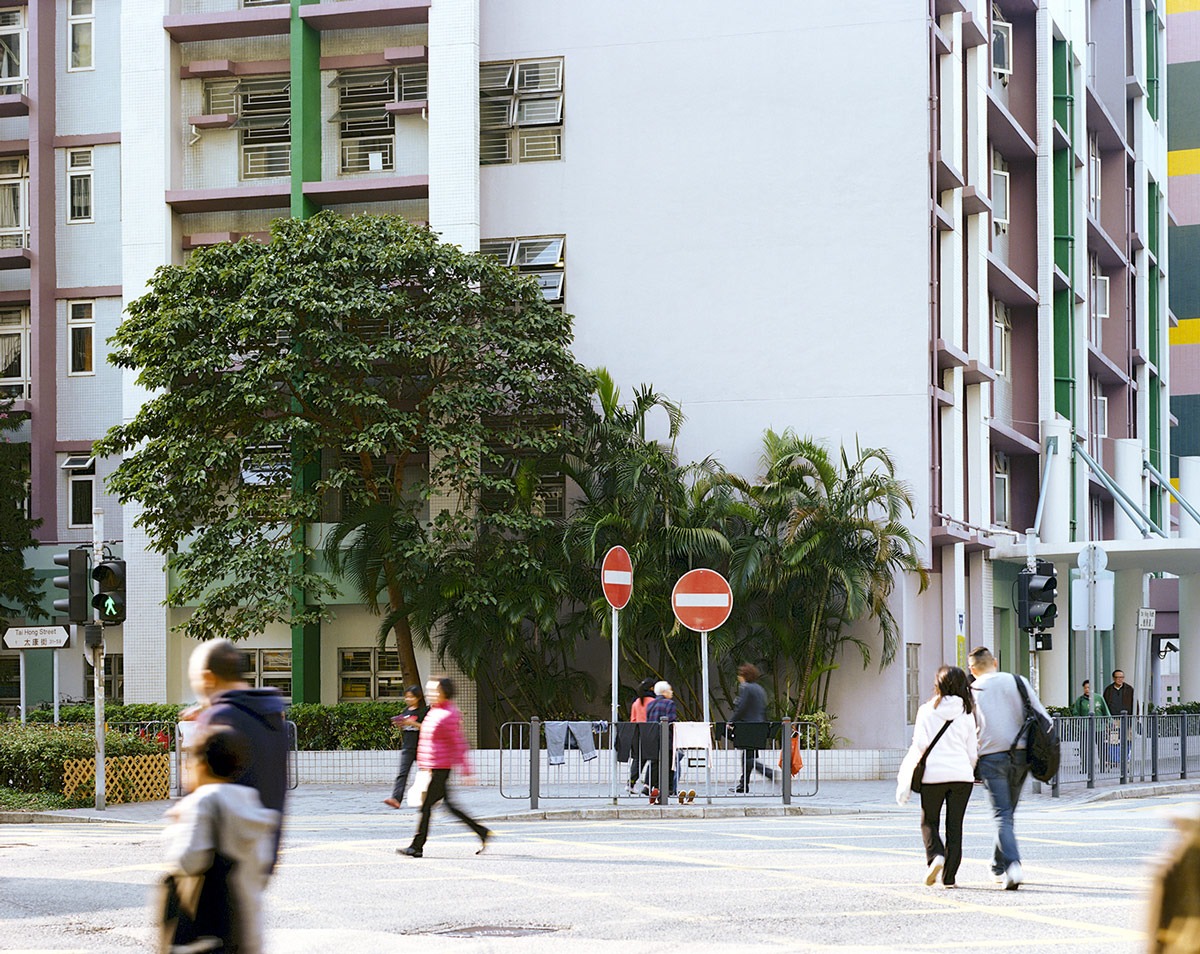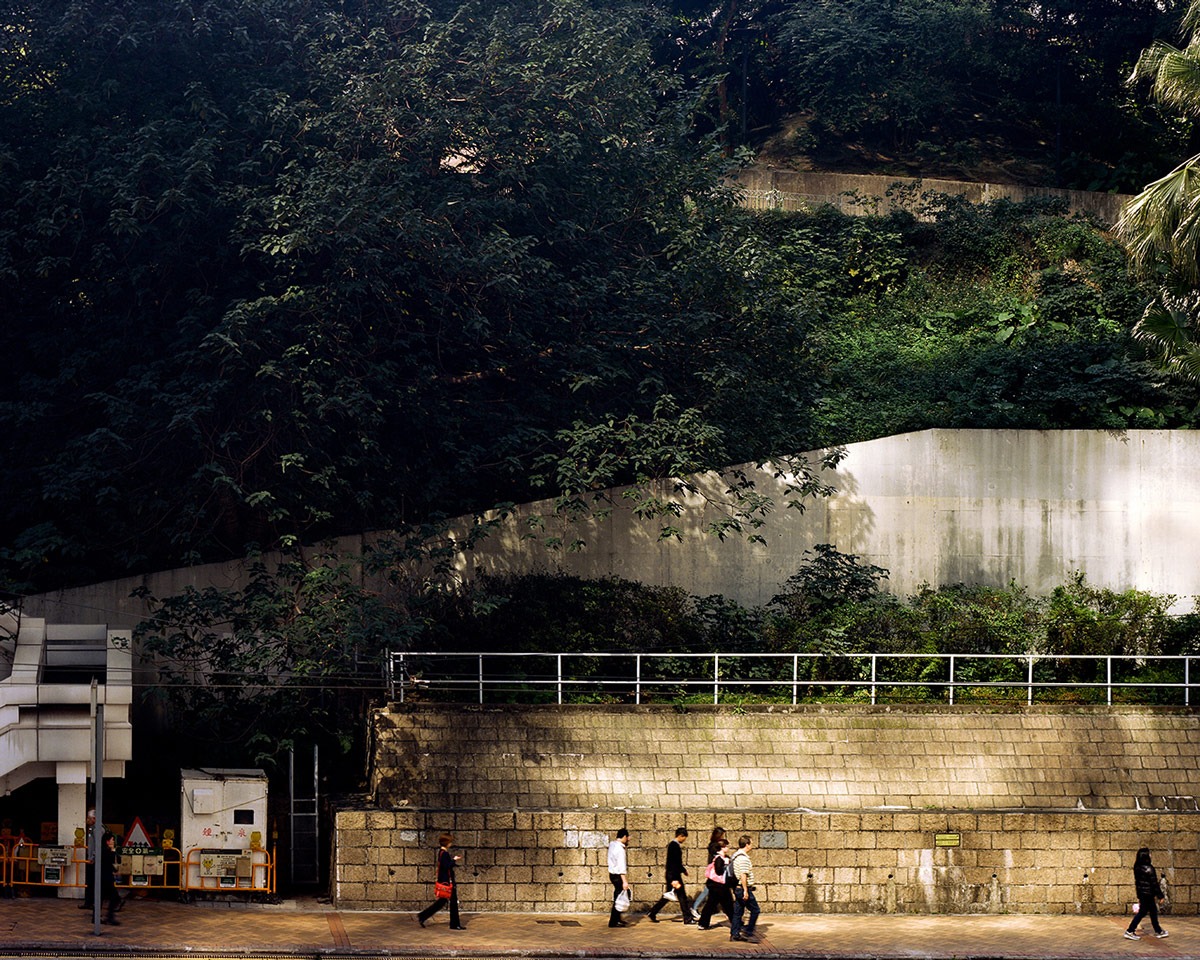
Originally
Hong Kong’s unique geographic characteristics make this city a place where the manmade and the natural densely coexist. During several walks across the urban landscape, French photographer Gaëtan Chevrier records this intricate relationship, normally overshadowed by the bustling life of this financial capital. The photographs and reflections that follow further expand upon ‘Originally’, a project undertaken by Chevrier between 2013 and 2018.
Originally. This is the title I chose following my numerous, daily walking sessions throughout the territory of Hong Kong. The physical experience of walking allows you to approach a different way of thinking. A way that, perhaps, has more to do with the senses than with the mind. It was through walking that I came to realise the omnipresence of nature within and despite the constructed environment. The title of the series, therefore, is a way to reconsider the status of the natural – a presence which preceded the first human colonisations. This approach tends toward a more universal vision by keeping the simplistic reading of the city at a distance.

My experience of Hong Kong was very peculiar, especially during the first few months. Faced with a new territory, you have to relearn (or rather, un-learn) your culture, reassess your codes and habits, learn a new way of organising your excursions. In Europe, we have a horizontal reading of the city. For example, it is unthinkable to find a shop on the 6th floor, with a sports complex 4 floors higher, and finally, at the top, a roof top bar. With the world’s largest number of skyscrapers – 317 towers taller than 150m – and the third-largest number of high-rise buildings in the world, the space of Hong Kong unfolds vertically and densely, rather than horizontally and sparsely. Daily life itself progresses upwards. It is therefore necessary to let yourself be open to new understandings of the urban game that is taking shape around you – to surrender to a change of perspective, both spatially and mentally.

Constrained by its geography, the city of Hong Kong is condensed to the extreme. Like an organism in search of light and oxygen, everything is in perpetual motion. There is no room for silence. Human activity is so continuous that, at times, day merges into night. Yet, my images do not show this. Perhaps unconsciously, I was searching for a way to stop the flow, to slow things down. Furthermore, due to my camera (a 4×5-inch folding) which utilises a slow shutter speed, there was often an interval between what was around me and the positioning I had decided to take. The camera acted as a bridge between two temporal axes, so that, by stepping back, I was able to find my own rhythm, rather than getting caught up in that of the city.

So, I could see it. In Hong Kong, the relationship between the human and the natural is tenuous. Of course, at first, they seem to be in conflict. An aggressive urban ‘will’, seizes you. Plant life, in and around the city, can only exercise a pressure, with the surrounding hills looming high over the tallest skyscrapers. In the depth of city, roots and moss cling to the sides of architecture, creeping into crevices. Yet what results is not conflict, but rather an entanglement. When you leave the hyper centre, moving towards the peripheral areas, the fluidity is revealed more clearly. Nature seems to maintain a homeostasis that tends towards coexistence, in which everyone and everything finds their place.

Perhaps because of this, I never took sides with one or the other. The reality is more complex than it seems. Since demographic, economic and political issues are part of the city’s development, I placed myself at a distance to allow the spectator to have their own free interpretation. I would like my images to bear witness to this biological and inorganic concurrence; the ambivalence of the natural/constructed. So, I let Hong Kong impress its complex biology onto film, without intervening. When the first British colonialists arrived in Hong Kong, they described its coasts as a bare rock with steep slopes.

Today, I would not focus on the extreme opposite, claiming that the territory now bears the indelible scars of human activity, despite how it may appear at first glance. Rather, nature seems to continuously reclaim its territory, resulting in a counterforce that defies verticality, silently perpetuating the pulse of the land’s origins.

All text and images © Gaëtan Chevrier
Recent articles

Southern California is many things. Quite infamously, it is known as a landscape defined by the automobile, from the emergence and diffusion of the highway system to fast food burgers, and the suburbanization of the United States. Walking this place then, would seem not only inconvenient, but ill advised. In… Read more »

What is today known as ‘whistleblowing’ could once take the form of interacting with a threatening gaze carved into the city wall. It is the case of the ‘boche de Leon’ or ‘lion’s mouths’ disseminated by the old Venetian Republic throughout its territory to suppress illegal activities. Through a close… Read more »

As he navigates through the recurrent lockdowns of the pandemic, stranded between hitchiking and muggings, job hunting and separations, Fabio Valerio Tibollo rediscovers photography as a powerful coping mechanism. Recording everything that happened around him for one year straight, from attending momentous events to finding curiosity in shots of simple living,… Read more »

